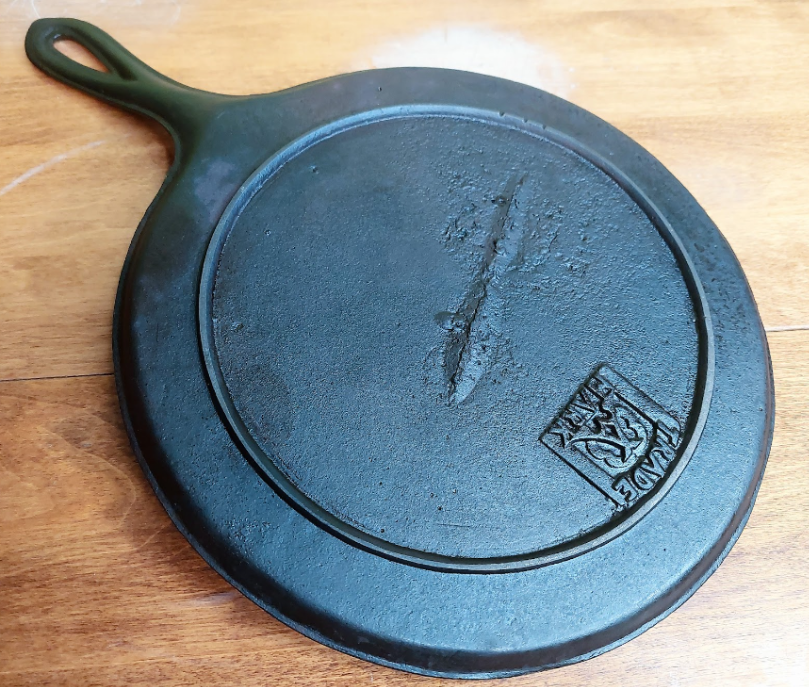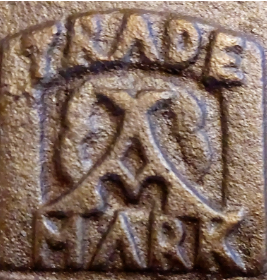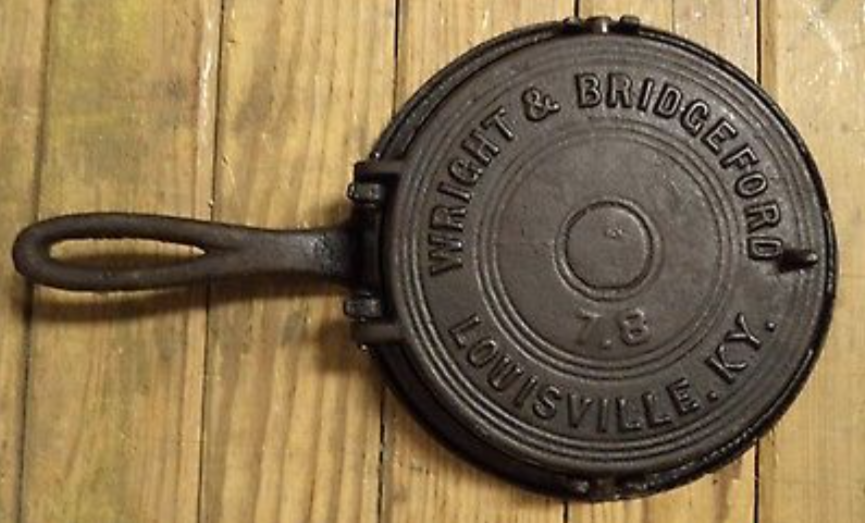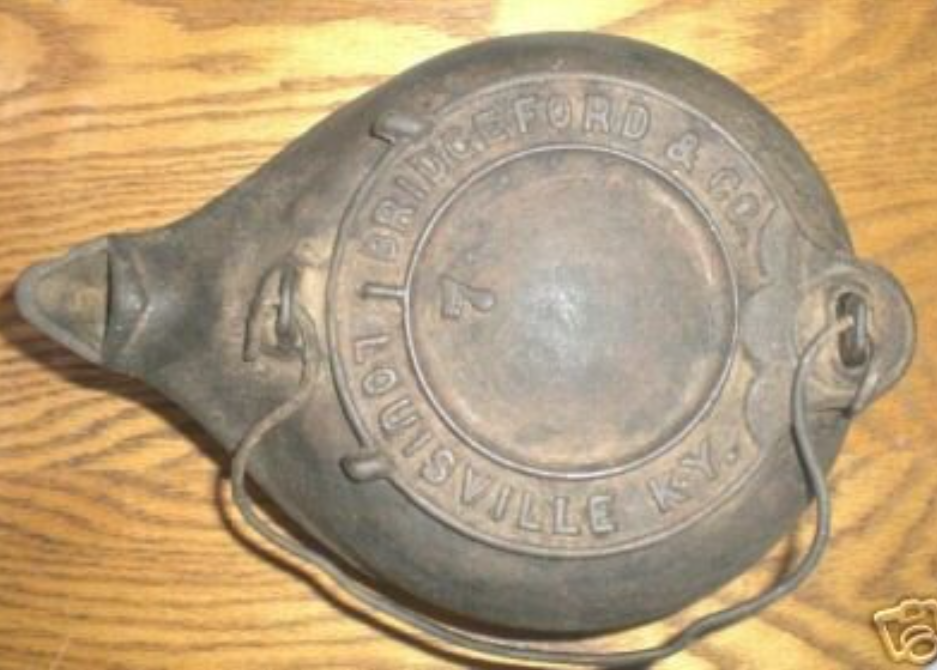Every so often my research into iron takes me down a goofy path. Maybe I’m looking into a lead on something I’ve been digging on a while and one name leads me to a different area and I wind up learning a whole bunch about some seemingly random foundry in Helena, Montana. Maybe someone posts something I’m not super familiar with in a group and because I’m pathologically curious I go spend a few minutes digging.
Some of these are decently known. Some of them less so. Some of them I’ve never even heard of or seen before. But in the interest of wanting to get decent information on early foundries in front of eyes that want to read about it: Welcome to the new blog series about oddball foundries!
This series is going to be a semi-deep dive on whatever it is I encounter that’s off the beaten path. So…not Barstow, not Spicers & Peckham. Not even Taunton Iron Works or Wood & Bishop. I don’t know tons about the latter two but theres information out there already. If I write about those, they won’t be part of this series. It’s also in the same vein as Howell Harris’s dives on odd bits of foundry history, but nowhere near as comprehensive or thorough. These posts are meant to get some decent information out there but with the understanding that I don’t have all the time in the world or get paid to do this. Quick history, and a jumping off point for more research. Got it? Good.
This post is going to focus on the predecessors to Bridgeford & Co., as well as a bit on Bridgeford & Co. itself.
There’s a few reasons for this. The first is that there is a very common mark that comes up on skillets, round handled griddles, SAD iron heaters, and a few other things. It’s a really fancy looking A and says Trademark. These are presumed to be Bridgeford. I think it was Howell Harris that found the registration paperwork for Bridgeford for a similar A mark. It’s still a presumption, but a strong one and one without any other real contenders.

You’ve likely seen these before if you’ve been into cast iron for a bit.
Here’s a close up of that mark. This is the same griddle as above and both images are mine and pulled from the Cast Iron Field Guide. Use em as you wish but the goofy angle I use is so that it’s not reasonable to steal my images for scam sales.


Bridgeford & Co.’s American trademark. It’s similar, but is it similar enough? Well…seeing as how they trademarked a stylized A logo I’m going with yes. If there’s a better contender the evidence has to come along with why they didn’t get sued by Bridgeford, seeing as how they were contemporaneous and in the same industry.
The second is that the predecessor foundry, Wright & Bridgeford, comes up every so often. Usually on a waffle iron, but I’m pretty sure I’ve seen it on some other things like at least one tea kettle. Maybe I’m making that kettle up because after a quick search I’m only seeing Bridgeford & Co. and then one that claims to be Wright & Bridgeford but it’s only marked Louisville and the style is far too late to have been them.
A Wright & Bridgeford waffle iron. This style is incredibly common for roughly the mid-1800s. I’m not sure when W&B would’ve added them to their lineup, but my guess would be around the mid 1840s based on others who were offering this style. This image is off WorthPoint.

Anyway.
The story of Bridgeford & Co is a kind of goofy one, with overlapping and conflicting timelines. We’ll get right into it and I’ll explain the discrepancies later while explaining what I think to be the most likely version of the story.

Bridgeford & Co. tea kettle. This is also off WorthPoint because I’ll only buy tea kettles from Rhode Island foundries. But this image is awful so if you want to volunteer your own I’d love to include it with credit.
Bridgeford & Co. has its roots very early, in 1829, when James Bridgeford and John V. Bland started James Bridgeford & Co. It was a very small operation and it only lasted a year until John Bland wanted out for whatever reason, leaving Bridgeford as the sole proprietor with the firm being renamed James Bridgeford. At the same time, as James Bridgeford & Co., there was also apparently a Cocks & Bridgeford, and it isn’t entirely clear how the partnerships truly took shape. My thoughts are that both Cocks and Bland were both part of the “& Co.” part of the firm and that neither partner lasted particularly long.
A nanosecond later (meaning the same year), Bridgeford partnered with “Mr. Holbrook,” who to the best of my digging could only be Edward Holbrook, Jr.
Mr. Holbrook was a pretty busy guy in the years before and after the mid 19th century. He was primarily in tobacco and railroads, but also seems to have been a judge–though this may have been his father. In any event, he was patenting tobacco cutters in the 1860s, which were something that you’ll see quite a few cast iron versions of if you spend enough time around the iron-enthusiast types. He may have been involved with Bridgeford to the ends of finding a manufacturer for his designs.
In any event, Holbrook was gone within a few months and David Wright became a partner, with Wright & Bridgeford being born in about 1830.
There are few accounts of the timeline here, and what sources exist are in conflict with one another. My main sources are a 1926 article on Bridgeford, and an 1882 book entitled, History of the Ohio Falls Cities and Their Counties, with Illustrations and Biographical Sketches.
Putting them together isn’t really straighforward because they each give different names and the timeline only somewhat overlaps. I mostly defer to the 1882 volume, because the other is an article put out by the foundry which one would think would be the better, but historians tend to have more rigorous methods than do marketing departments.
Anyway, the marketing department has 1830, and the History of Ohio Falls Counties has no immediate year stated but doing the math it’s about 1839 for Wright & Bridgeford.
According to the History, Cocks & Bridgeford carried on for five years, bringing us to 1834 when Bridgeford, Ricketts & Co. was formed. Who is that? Well, at the time they employed 30-40 people and made various copper and iron castings. My thoughts are that there are two parallel histories of James Bridgeford. One is his personal pursuit, and one was what all he got up to while building his name.
An 1837 advertisement for Bridgeford, Ricketts & Co in the Western Address Dictionary, which was a business directory for Pennsylvania, Ohio, Virginia, Kentucky, and Indiana.

This firm lasted until about 1839 from what I can tell, which lines up with the History saying that it dissolved after 5 years. It was at this time that Bridgeford met up with David Wright, forming Wright & Bridgeford. Wright & Bridgeford persisted for “about 18 years,” which seems like fuzzy math to get us to 1856, but if Bridgeford & Ricketts dissolved in early 1839 and Wright & Bridgeford dissolved in late 1856…this could be about 18 years, give or take. The History notes that the first stoves produced by Wright & Bridgeford were as early as 1842 (bringing me back to my date of roughly mid 1840s onward for that waffle iron).
In 1856, James Bridgeford bought out the entire interest of David Wright and proceeded to promote several employees to partner (there’s more research to be done on that, just not by me) and formed Bridgeford & Co.
Bridgeford & Co is a name that’s a bit better known in “the hobby,” but not with any real substance. Basically what’s known is that sometimes a tea kettle or waffle iron will pop up marked by either Bridgeford & Co or Wright & Bridgeford, respectively, and then there will be some oohs and aahs with someone or another chiming in with what information is commonly known.
We’ve already found out that they have their roots very early, but that the name Bridgeford & Co. came into use in 1856.
They made some really nice hollow ware, with apparent claim to one of the very few marked “semi fancy” (I still prefer “handle of moderate fanciness”) handles. They made stoves, and their Orient model was licensed to numerous firms, including the Barstow Stove Company.
Bridgeford & Co. lasted a very long time. They celebrated their 97th anniversary in 1926, if their marketing department is to be believed. Regardless, they have their roots in the second quarter of the 19th century, and they lasted until the second quarter of the 20th century. I don’t know exactly when it is they went under, but they’re one such firm that deserves a bit more love than they get.
If you’ve got any images of Bridgeford & Co. or Wright & Bridgeford pieces, share them in the comments or send them to info@anthrospin.com. We’d love to see them, and if you’d like to allow them to be shared in this post, we’re happy to give you full credit and are thankful for your contributions.
Have an oddball foundry that you’ve got some information on? Howbout one you’d like some information on? We’re happy to take requests and love doing dives on obscure bits of foundry history. Let us know and we can work together to get searchable bits of good history on obscure foundries in front of every eyeball that wants to see them!